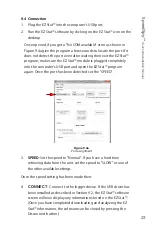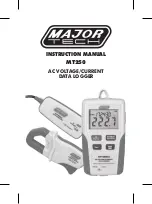
Sp
eedSp
y™
U
ser
’s & I
nstalla
tion M
anual
14
As the angle between the beam of the antenna and the target
vehicle increases, the recorded speed decreases . Ideally, an angle
of zero degrees (0°) is preferable, because the recorded speed is the
actual target vehicle speed (see Table 4 .2) .
The following table shows the effect that an increasing angle has on
a recorded speed:
Horizontal Angle Degrees
Actual
Speed
0° 1° 3° 5° 10° 15° 20° 30° 45° 60° 90°
Displayed speed:
30 mph
30 29 29 29 29
28
28
26
21 15
0
40 mph
40 39 39 39 39
38
37
34
28 20
0
50 mph
50 49 49 49 49
48
46
43
35 25
0
60 mph
60 59 59 59 59
57
56
51
31 30
0
70 mph
70 69 69 69 68
67
65
60
49 35
0
80 mph
80 79 79 79 78
77
75
69
57 40
0
Table 4.2
Actual and recorded speeds at antenna-to-target angles
Small angles (less than 10°) have little effect on accuracy . As the angle
increases, the recorded speed decreases . At 90°, the target speed is
0 - grossly incorrect .
4.3 Feedback Interference
When the radar beam is directed at computer screens, streetlights
and other electronic devices, it can record spurious speeds . To correct
this type of interference, relocate the SpeedSpy™ .









































